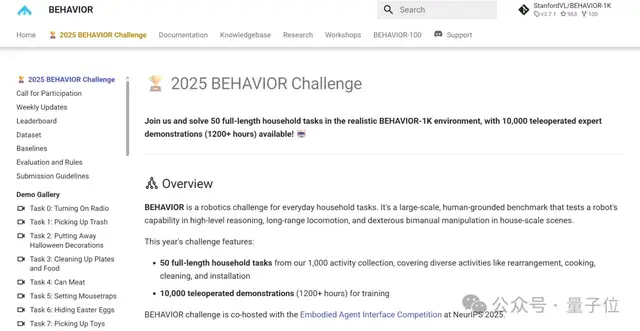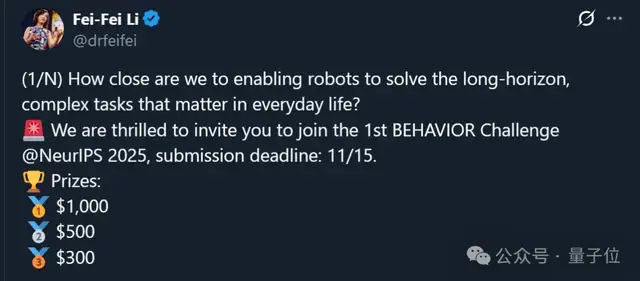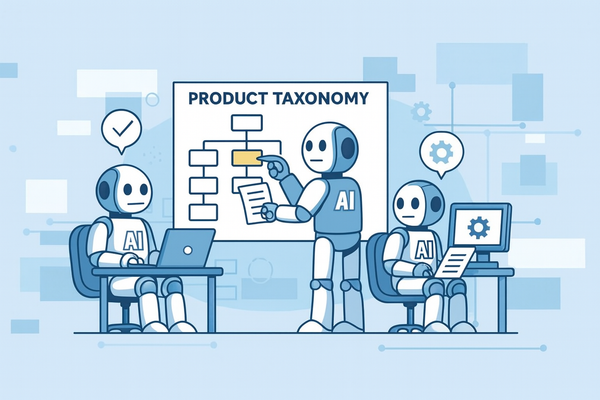Fei-Fei Li Launches Home Robotics Challenge, Jensen Huang Quickly Funds Sponsorship

Fei-Fei Li Launches the First BEHAVIOR Household Challenge
Fei-Fei Li is taking the ImageNet approach to advance embodied intelligence — this time, for robots.
Initiated by Li’s team and sponsored by NVIDIA (among others), the First BEHAVIOR Household Challenge has now officially started, aiming to unite academia and industry toward one lofty goal: robots doing household chores.

---
Challenge Overview
Participants must use the Xinghai R1 Pro robot — equipped with dual-arm manipulation and wheeled mobility — as a standard platform. They will operate within the realistic BEHAVIOR-1K virtual home environment to complete 50 fully defined household tasks, such as:
- Rearranging furniture
- Cooking
- Cleaning
Tools & Resources Provided
- Freedom to choose any algorithms
- Access to 10,000 expert demonstration trajectories (~1,200 hours) for imitation learning
Competition Tracks
- Standard Track
- Robots rely solely on sensory input for decision-making.
- Privileged Track
- Robots receive additional environment data (e.g., coordinates, room structure)
Scoring Metrics
Primary:
- Task completion rate (e.g., fully putting dishes into dishwasher)
- Partial completion credit (e.g., picking up a plate but not placing it)
Secondary:
- Simulated time to completion
- Distance traveled
- Hand/arm movement counts
- Stability
Final rankings are weighted mainly by average task completion rate.
Submission deadline: November 15, 2025
Awards: Top 3 win up to USD $1,000 and an RTX 5080 GPU

---
Origins — Why BEHAVIOR Was Initiated
During a fireside chat with Jim Fan (NVIDIA Embodied AI Lab Co-Lead) and Edmar (NVIDIA Omniverse Community Manager), Fei-Fei Li revealed that her inspiration came directly from ImageNet.
- In 2009: Li’s team published ImageNet: A Large-Scale Hierarchical Image Database at CVPR.
- Combined with the ImageNet Challenge, it set a gold standard in computer vision and catalyzed deep learning’s rapid rise.
- With today’s embodied intelligence surge, Li aims to “do it again” for robotics.

---
Challenges in Robot Learning
Current pain points for home robots include:
- Lack of standardization in robot learning benchmarks
- Fragmented task selection, making cross-comparison difficult
- Scarcity of training data, similar to pre-ImageNet vision research
Li envisions BEHAVIOR as a “North Star” to guide robotics community efforts forward.
---
BEHAVIOR Principles & Standards
1. Human-Centered Design Philosophy
- AI is meant to augment and empower humans, not replace them.
- Influences task design, dataset choices, and ethical considerations to align robot goals with human needs.
2. Focus on Household Tasks
BEHAVIOR defines capability requirements for a true home robot:
> Cross-room navigation, dual-arm fine manipulation, long-term planning, and adaptive responses to dynamic environments.
The challenge aims for large-scale, comprehensive task environments to develop these skills.
---
Impact Beyond Robotics
As embodied AI rises, platforms help share and monetize related research and content.
For example, AiToEarn is an open-source global content monetization system enabling creators to use AI for:
- Content generation
- Cross-platform publishing
- Analytics
- Model ranking
Creators can simultaneously reach audiences across Douyin, Kwai, WeChat, Bilibili, Xiaohongshu, Facebook, Instagram, LinkedIn, Threads, YouTube, Pinterest, and X/Twitter.
Projects like BEHAVIOR, together with tools like AiToEarn博客 and AI模型排名, strengthen research-to-community connections.
---
BEHAVIOR in numbers:
- 1,000 household activities
- 50 full long-range challenges
- Avg. 6.6 minutes continuous operation per task
With its human focus, clear objectives, and scale, BEHAVIOR could become “the next ImageNet” for embodied intelligence.
If ImageNet heralded the golden era of visual AI, BEHAVIOR may be the rallying cry for embodied AI.
---
Trends & Outlook
Household chores have quickly become one of the most popular goals for embodied AI projects.
For large language models (LLMs), evaluation means problem-solving;
for embodied robots, evaluation means doing chores.
The trajectory is clear.
Competition details page:
https://behavior.stanford.edu/challenge/index.html
---
Content Monetization Opportunities
As this shift toward embodied AI grows, creators also seek broader publishing and revenue tools.
AiToEarn官网 offers an open-source AI content monetization platform to:
- Generate content
- Publish across major social channels
- Track analytics
- Rank AI models globally
It supports Douyin, Kwai, WeChat, Bilibili, Xiaohongshu, Facebook, Instagram, LinkedIn, Threads, YouTube, Pinterest, and X/Twitter from one integrated system — enabling creators to ride the wave of robotics and AI innovation efficiently.




